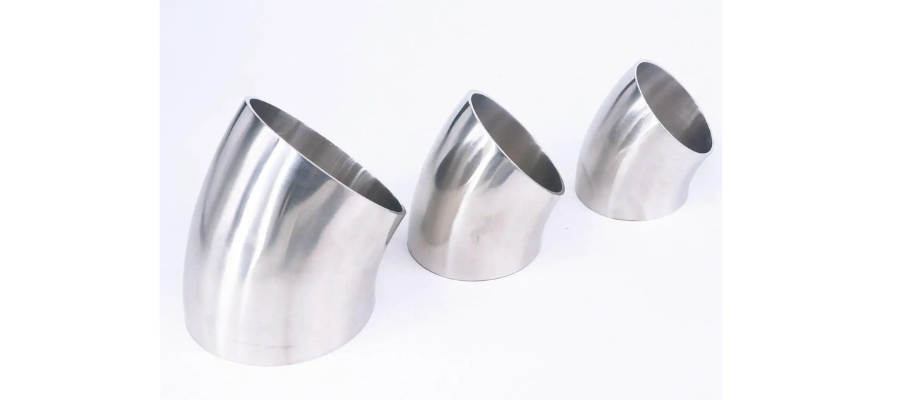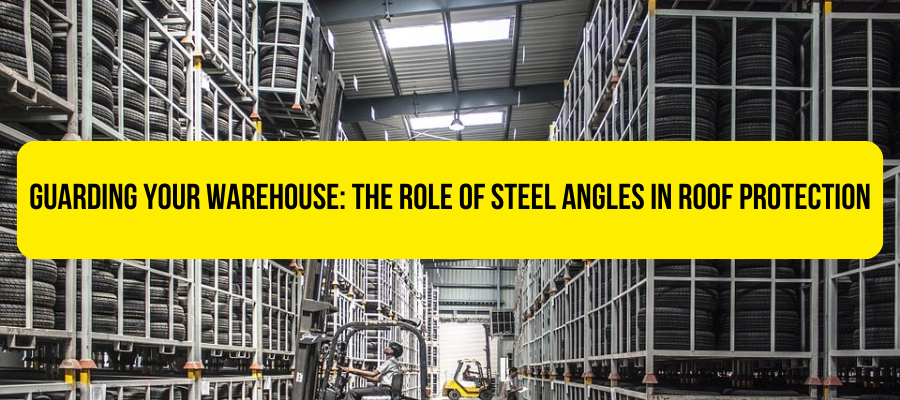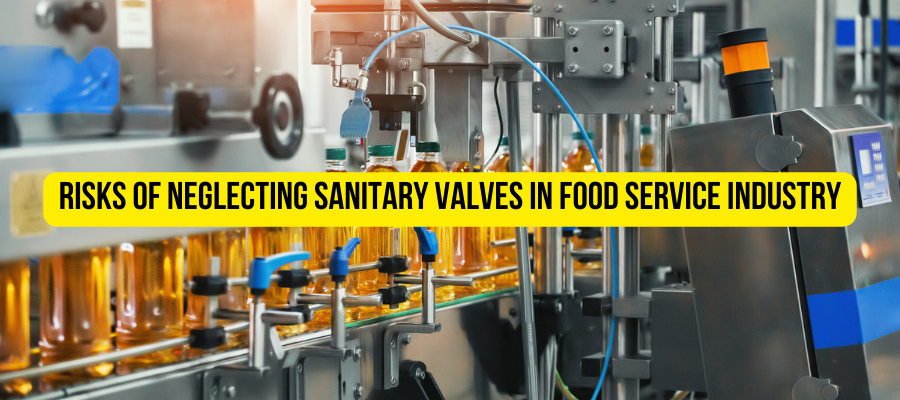The Role of Pipe Fittings in Water Safety

Risks Of Neglecting Sanitary Valves In Food Service Industry
February 24, 2024
Guarding Your Warehouse: The Role of Steel Angles in Roof Protection
March 6, 2024Think about the last time you turned on the tap and crystal-clear water flowed out effortlessly. While we often take the convenience of clean, running water for granted, a hidden network of components ensures its safe delivery. PEX Pipe fittings, the unsung heroes of your plumbing system, play a crucial role in safeguarding your water supply. From leak prevention plumbing and maintaining water quality to regulating pressure and ensuring efficient flow, these seemingly simple components have a significant impact on your home’s water safety. In this blog, we’ll delve into the world of pipe fittings, exploring their various functions and how they contribute to a healthy and water safety at home for you and your family.
Role of Plumbing Systems in Ensuring Safe Water Standards on Construction Sites
Piping and Plumbing Fitting are the backbone of any construction project, serving as the essential infrastructure for delivering safe and clean water to various parts of the site. They play a critical role in upholding stringent water standards to safeguard the health and well-being of workers and occupants alike.
One of the primary system functionality of plumbing on construction sites is to facilitate the distribution of water to different areas efficiently. Pipe fittings, the connectors that link various sections of pipes together, play a crucial role in this process. They act as the conduits through which water flows, directing it to where it’s needed while maintaining a consistent and reliable supply.
Moreover, plumbing systems must adhere to strict safety regulations and standards to mitigate any potential risks associated with water usage. Proper installation, regular maintenance, and adherence to building codes are paramount in ensuring that the plumbing infrastructure meets these requirements. Additionally, the choice of materials for pipes and fittings must be carefully considered to withstand the demands of construction activities and environmental factors.
How pipe fittings connect and direct water flow
Pipe fittings are the essential components that enable the seamless connection and efficient direction of water flow within construction sites. These fittings, available in various shapes and sizes, serve as the vital links that join different sections of pipes together.
Their primary function lies in creating a tight seal between pipes, ensuring that water can flow smoothly without any leaks or interruptions. Whether it’s a straight connection, an elbow for navigating corners, or a tee for branching off into multiple directions, each fitting plays a crucial role in maintaining the integrity of the plumbing system.
How pipe fittings contribute to maintaining water quality
Pipe fittings help keep water clean and safe to use in plumbing systems. They do this by forming tight seals between pipes, which stops outside dirt or germs from getting into the water. By using the right materials for fittings and making sure they are installed correctly, we can make sure the water stays healthy. Regular checks and fixes also help maintain water quality by finding and fixing any problems early on. Essentially, pipe fittings are like guardians that help ensure the water we use is always clean and safe.
The Role of Pipe Fittings in Preventing Leaks and Water Damage
Leaks in plumbing systems can lead to significant water wastage and damage to property. Pipe fittings act as a barrier against leaks by securely joining pipes together, minimizing the risk of water seepage. Properly installed fittings create a watertight seal, preventing any potential leaks that could compromise the integrity of the plumbing system and cause water damage.
Pipe fittings serve a crucial function in preventing leaks and water damage within plumbing systems. These fittings act as the joints that connect different sections of pipes, ensuring a secure and watertight connection. By creating tight seals between pipes, pipe fittings effectively prevent any water from escaping or leaking out. This not only conserves water but also protects the surrounding infrastructure from potential damage caused by water leakage.
By choosing high-quality materials and ensuring proper installation, construction sites can rely on pipe fittings to safeguard against leaks and water damage, preserving the integrity of the plumbing infrastructure and minimizing the risk of costly plumbing leak repair or replacements in the future.
Choosing the Right Material for Your Pipe Fittings: A Decision That Impacts Water Quality
Selecting the appropriate material for pipe fittings is a critical decision that directly affects water quality within plumbing systems. Different materials offer varying levels of durability, corrosion resistance, and suitability for specific applications, all of which can impact the purity and safety of the water being transported.
For instance, materials like brass and copper are known for their resistance to corrosion, making them ideal choices for fittings that come into contact with water. On the other hand, plastic fittings may be more prone to degradation over time, potentially compromising water quality. Furthermore, the choice of material also influences factors such as cost, installation requirements, and environmental considerations.
By carefully evaluating these factors and choosing high-quality materials that are compatible with the intended use and environmental conditions, construction sites can ensure the continued safety and purity of their water supply. Regular maintenance and inspections further contribute to preserving water quality by identifying and addressing any issues related to fittings and materials.

The Importance of Regular Maintenance for Water Pipe Fittings
Regular maintenance of water pipe fittings is crucial for ensuring the continued efficiency and reliability of plumbing systems. Over time, fittings may become worn, corroded, or damaged, leading to potential leaks, water wastage, and even water contamination. By conducting regular inspections and maintenance checks, construction sites can identify and address any issues with pipe fittings before they escalate into more significant problems.
One of the primary reasons for regular maintenance is to prevent leaks. Even small leaks in pipe fittings can result in significant water loss over time, impacting both water conservation efforts and utility costs. Additionally, leaks can lead to water damage to surrounding structures and infrastructure, causing costly repairs and disruptions to construction activities.
Signs of Pipe Fitting Problems and When to Seek Repairs
One of the most obvious signs of pipe fitting problems is the presence of leaks. Leaks can manifest as visible water dripping or pooling around fittings, as well as dampness or water stains on walls, ceilings, or floors. Even small leaks should not be ignored, as they can worsen over time and lead to significant water damage if left untreated.
Another sign of pipe fitting problems is reduced water pressure. If you notice a decrease in water pressure from faucets or fixtures, it may indicate a blockage or obstruction within the plumbing system, possibly caused by a faulty or damaged fitting. Addressing this issue promptly can help restore proper water flow and prevent further damage to the system.
DIY Tips for Inspecting Pipe Fittings in Good Condition
To prolong the lifespan of pipe fittings and maintain water safety, implementing a few simple maintenance practices can go a long way:
- Regularly inspect pipe fittings for signs of wear or damage.
- Keep pipes clean and free from debris to prevent blockages.
- Ensure proper installation by qualified professionals to minimize the risk of leaks.
- Use high-quality materials that are suitable for the specific application and environmental conditions.
- Address any plumbing issues promptly to prevent them from worsening over time.
Get in Touch with Us Today for Your Pipe Fitting Needs!
Are you looking for a reliable pipe fitting supplier in the Middle East? Look no further than Piping Project Middle East, your trusted partner for high-quality pipe fittings. As a leading pipe fittings stockist in the region, we offer a wide range of products to meet your project requirements. Our commitment to quality, reliability, and customer satisfaction sets us apart. Contact us today to discuss your pipe fitting needs and experience the difference with Us.



